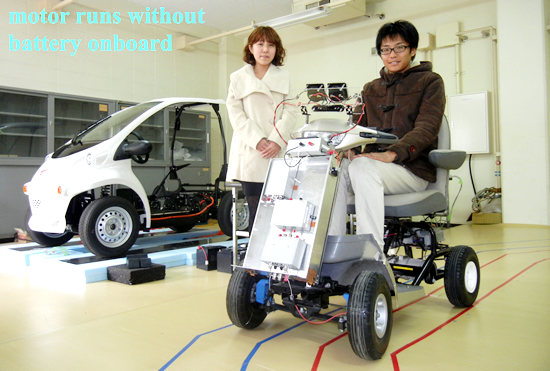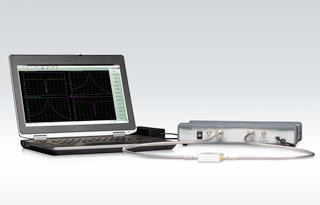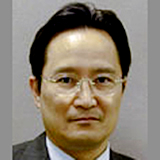
ここからコンテンツです。

A new measure for wireless power transfer
Supporting the construction of highly efficient transfer links through a real-time kQ display. By Takashi Ohira
Professor Takashi Ohira and the Anritsu Corporation have jointly developed a new measurement system to support the construction of highly efficient wireless power-transfer links. The system measures the kQ ("coupling coefficient k" and "quality factor") product in real-time, to make it possible to find the maximum transmission efficiency by changing the power transmission and reception positions. This measurement system accelerates the realization of wireless power-transfer applications, such as contactless powering, battery-free electric vehicles, and energy harvesting.
Wireless power transfer has many promising applications, such as contactless powering, electric vehicles, and energy harvesting. To construct a wireless power-transfer system, a “wireless transfer coupler” is necessary to deliver the energy from a high-frequency power source to a load, with no physical contact.
In the past, “coupling coefficient k” was used as an index of wireless-power-transfer efficiency. Since k decreased as the power-transfer distance increased, it was believed that the transmission efficiency would decline. In 2007, however, it was found that the transfer potential could increase, even over large distances, if the Q factor (quality factor) was high.

Professor Takashi Ohira, Director of the Research Center for Future Vehicle City at Toyohashi University of Technology, in cooperation with the Anritsu Corporation, has made it possible to measure the kQ product in real-time, based on Ohira's kQ theory. This software is installed in the ShockLine-series Vector Network Analyzers, models MS461xxA, MS463xxA, and MS465xxB.
"A function to simultaneously estimate and display the ηmax (maximum efficiency, see Reference 3) of a wireless transfer link from the kQ product using tan θ (the efficiency tangent) has also been realized," explains Professor Ohira. "Using this newly developed measurement system, it is possible to greatly improve prototypes and design high-efficiency couplers for wireless power transfers."

This system contributes to the construction of highly efficient wireless power-transfer systems by enabling the following.
- Finding the maximum transmission efficiency by changing (scanning) the power transmission and reception positions.
- Improving development speeds through the quick discovery of structures and dimensions.
- Rapidly discovering the dependency of the optimum transmission frequency on structural parameters.
This newly developed "kQ measurement system" will accelerate the realization of various wireless power-transfer applications in our everyday lives; for example, contactless powering of home applications, battery-free electric vehicles, and energy harvesting.
This system was introduced at CEATEC JAPAN 2015 (Combined Exhibition of Advanced Technologies; Japan's largest IT and electronics exhibition), in Makuhari, Japan, October 7–10, 2015.
Further technical notes:http://www.tut.ac.jp/english/introduction/docs/pr20151008_ohira.pdf
This study was supported by the SCOPE (Strategic Information and Communications R&D Promotion Programme) Project #01590001 of the Ministry of Internal Affairs and Communications.
References
Anritsu Corporation, "Measurement instrumentation," Key Technologies Stage 5K49, CEATEC JAPAN 2015, Makuhari, Japan, October 7–10, 2015.
Takashi Ohira(2014) “Maximum available efficiency formulation based on a black-box model of linear two-port power transfer systems,” IEICE Electronics Express, 11(13), 1–6.
Takashi Ohira(2014), “Angular expression of maximum power transfer efficiency in reciprocal two-port systems”, Proceedings of IEEE Wireless Power Transfer Conference 2014 (WPTC2014), 228–230, DOI: 10.1109/WPT.2014.6839568, Jeju, Korea, May 2014.
Researcher Profile

| Name | Takashi Ohira |
|---|---|
| Affiliation | Department of Electrical and Electronic Information Engineering |
| Title | Professor / Director of Research Center for Future Vehicle City |
| Fields of Research | Wave Engineering / RF Circuits / Mobile Power Transfer |
ここでコンテンツ終わりです。
